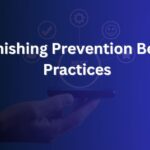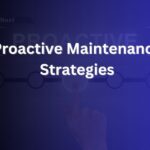Modern attackers move fast and hit every layer of your stack. Your team needs speed, focus, and clear decisions. AI delivers that edge without sacrificing control. It learns normal behavior, spots weak signals early, and cuts noisy alerts.
It links evidence across endpoints, identities, cloud, and network in real time. It also guides response with playbooks that adapt as threats evolve. U.S. teams now report shorter dwell times and fewer high-impact incidents.
You will learn how AI boosts detection, automates response, protects identity, and improves governance, in this article.
Why AI matters right now
Threat volume grows each quarter while headcount stays tight. AI handles scale and keeps pace with shifting tactics.
Breach costs keep rising for many industries. Faster detection and containment reduce those bills in measurable ways.
Recent numbers show the gap. The global average breach cost climbed again in 2024. Organizations with mature automation cut both dwell time and remediation spend. That combination turns security from constant firefighting into a repeatable program with results the business can see.
Sharper detection that adapts daily
Signature rules miss new payloads. Attackers change the package and slip past static defenses.
AI hunts behavior, not only labels. It models normal activity for users, devices, and workloads. It flags lateral movement, odd data pulls, and privilege spikes as they emerge.
When a threat looks new, behavior still gives it away. Sudden encryption, backup tampering, and suspicious process chains trigger early containment. Your team moves before damage spreads.
Real-time anomaly detection across your stack
Data sits everywhere now. Networks, endpoints, SaaS, cloud, and edge.
AI connects those dots in seconds. It ties an unusual OAuth grant to a rare API method call. It links a kernel event to stealthy DNS drip toward a low-reputation domain. The stitched story beats a pile of isolated alerts every time.
The payoff shows up in mean time to detect. Teams cut investigation steps because context arrives pre-built. The right owner gets the right case with the right evidence.
Noise reduction that saves analyst energy
False positives drain your best people. AI performs triage.
It clusters duplicates, suppresses obvious noise, and ranks cases by true risk. It writes plain-language summaries with artifacts, hypotheses, and next actions. New analysts ramp faster. Senior analysts spend time on hard problems instead of chasing ghosts.
This matters for retention. A calmer queue and cleaner cases reduce burnout. Leaders see more tickets closed per analyst and fewer escalations that add weekend work.
Response automation without losing control
Speed decides outcomes. AI accelerates the routine steps while humans approve high-impact actions.
It can isolate a host, roll a credential, revoke a risky token, or open a case with full enrichment. You choose the gates. You decide which actions proceed automatically and which require a click.
Playbooks improve as the system learns. If a step sequence fails to contain a class of ransomware, the workflow changes. Your response grows sharper with each incident and exercise.
Identity defense where attacks land first
Most breaches still start with people and access.
AI analyzes authentication risk continuously. Impossible travel, device posture drift, rare browser fingerprints, and unusual resource access raise friction only when needed. Users keep smooth sign-ins during low risk. Attackers hit extra checks when risk spikes.
AI also maps toxic permission combinations and dormant admin accounts. It recommends least-privilege cleanups and just-in-time elevation. That trims blast radius across your cloud and SaaS estate.
Email and social engineering, upgraded
Generative tools produce cleaner phishing at scale. AI counters with relationship graphs and sender behavior modeling.
A message can look perfect yet feel wrong for that sender. The model senses that mismatch and quarantines the email. Security awareness programs improve when real campaigns feed insights back into detections.
Deepfake risk keeps rising. Audio spoofs push finance teams to rush payments. AI scores media artifacts and flags high-risk requests. Finance receives a callback step by default during sensitive transactions. Funds stay put.
Cloud, SaaS, and edge coverage without agents
You cannot install agents everywhere. Containers live for minutes. Third-party SaaS sits outside your control plane.
AI learns normal API use by service and identity. It flags rare methods, bursty downloads, and subtle data egress patterns. It also baselines edge devices using network metadata and control-plane logs, catching abuse on VPNs, gateways, and unmanaged gear.
This closes blind spots quickly. You gain visibility without a long deployment project. You also gain confidence that shadow services do not erode your risk posture.
Exposure and vulnerability management with context
Scanning dumps long lists no team can finish.
AI ranks issues by exploitability, asset value, internet exposure, and dependency risk. It understands your change windows and what tends to break. It proposes patch sequences that reduce measured risk first.
Forecasting adds more value. The model learns which CVEs align with current attacker focus for your stack. You fix five high-leverage items instead of fifty low-impact ones. Risk curves bend faster.
Fraud, API abuse, and data protection
Fraud thrives on scale and speed. AI monitors transaction velocity, device reputation, and behavioral biometrics per session.
It steps up checks or stops the session when risk rises. That saves revenue without punishing legitimate customers.
APIs expose business logic to the internet. AI maps endpoints, discovers shadow surfaces, and detects scraping, stuffing, and inventory abuse. It tracks unusual data flows and flags exfiltration disguised as normal traffic. Product and security teams get early warning, not retrospective pain.
Clear business impact, not just dashboards
Leaders need proof. AI enables hard, repeatable metrics.
Track mean time to detect and mean time to contain. Track alert fidelity, false positives avoided, and tickets closed per analyst. Track ransomware blast radius in simulations before and after automation. Track hours returned to projects as the queue shrinks.
Recent trendlines tell a simple story. Median dwell time keeps dropping in well-instrumented environments. Teams that pair detection with workflow automation cut costs and reduce customer impact. Those results drive budget support across boards and audit committees.
Governance that keeps you safe and fast
AI adds power and new risk surfaces. Govern both.
Assign owners for models, data pipelines, and change control. Document training data, evaluation metrics, approvals, and rollback plans. Require reviews for any action that changes identity, keys, or production data. Keep humans in the loop for sensitive steps.
Treat AI like a talented intern with sharp tools. Minimal privileges. Narrow scope. Continuous supervision. Strong logging. This mindset prevents an automation mistake from becoming tomorrow’s incident.
Data quality, drift, and telemetry hygiene
Models learn what you feed them. Bad logs produce confident mistakes.
Normalize fields across tools. De-duplicate events. Tag outcomes so the system can learn what worked. Align time stamps. Fix broken parsers. These basics unlock real accuracy gains.
Drift happens as your environment changes. Schedule retraining, back-testing, and reviews. Track precision, recall, and error by use case. Adjust thresholds slowly and document every change. Reliability compounds when you treat the model like a living control, not a one-time project.
Privacy and compliance by design
Security data often includes personal information.
Build privacy into collection, storage, and training. Minimize retention and mask sensitive fields. Gate access by role. Log queries and exports. Validate vendor claims on training usage and deletion timelines. Negotiate audit rights and strict isolation for training artifacts.
This keeps you aligned with U.S. regulatory expectations and sector standards. It also preserves customer trust when you talk about AI adoption.
Prepare for AI-enabled adversaries
Assume attackers automate reconnaissance, payload generation, and phishing at scale.
Harden content pipelines with sandboxing and inspection. Use adaptive policies across identity, device, and workload tiers. Bind sensitive actions to strong posture and fresh authentication.
Expect risks from autonomous agents you deploy internally. Constrain tool access. Validate inputs and outputs. Log every action. Keep scope narrow until you build evidence of safe performance.
Start small, win fast, then scale
Pick one painful use case with clear data and a crisp metric.
Example: cut phishing investigation time by forty percent in eight weeks. Feed email and identity telemetry into an AI classifier and enrichment bot. Keep human approvals on containment. Publish the before-and-after numbers and the lessons learned.
If it works, extend to endpoint isolation on high-confidence detections. Next, add SaaS OAuth monitoring and risky token revocation. Expand by proof, not by hope.
Vendor selection without regret
Demand proof on your data, not polished demos.
Ask for suppression accuracy, case conversion rate, and analyst satisfaction. Test workflow fit inside tools your team already uses. Define exit criteria up front. If the pilot misses, move on quickly. If it delivers, scale with a clear runbook and training plan.
Negotiate privacy and model usage in writing. Require clean data boundaries and deletion timelines. Ensure you control keys and identities. Make the safe default the easy default.
Talent: grow the team you already trust
AI multiplies strong analysts. Teach model basics, prompt tactics, and data hygiene.
Rotate staff through model evaluation and playbook tuning. Celebrate early wins with visible dashboards. Share runbooks that capture new best practices. Investing in people keeps the tools effective and the program resilient.
Sector-specific wins to expect
Healthcare can detect abnormal EHR access and reduce insider risk while protecting patient privacy.
Finance can stop real-time fraud without crushing conversion rates. Retail can block bot abuse on inventory and checkout flows. Manufacturing can baseline OT networks and flag stealth command changes before process impact.
Public sector can defend citizen services from credential stuffing. Education can blunt phishing waves that target students and staff. Each sector maps AI to dominant threats and measures outcomes in operations, not only in dashboards.
KPIs that translate to dollars
Tie security results to business impact.
Show reduced downtime and stabilized SLAs. Show fewer chargebacks and cleaner fraud rates. Quantify reclaimed analyst hours. Highlight faster vendor incident handling and avoided penalties. These numbers win stakeholder support and sustain momentum.
Common pitfalls and how to avoid them
Do not deploy AI without access controls and audit. Lock credentials and restrict actions.
Do not chase features before fixing data quality. Garbage in yields expensive noise.
Do not over-automate on day one. Start with low-risk steps and expand as confidence grows. Do not skip red-team testing of AI surfaces. Probe for prompt injection, data poisoning, and tool overreach. Do not ignore people and process. Train, pair, and iterate so adoption sticks.
Executive checklist for the next quarter
Fund a narrow pilot with one measurable outcome.
Stand up governance with named owners and model change gates. Instrument dashboards for MTTD, MTTR, alert fidelity, and exposure reduction.
Confirm privacy controls, data boundaries, and vendor commitments. Schedule a red-team exercise that targets AI surfaces. Launch analyst training that covers workflows and evaluation. Report progress to the board in plain language tied to risk and dollars.
Bottom line
The benefits of AI in cyber security show up in real outcomes. You detect earlier, triage smarter, and respond faster across hybrid estates. You cut costs by shrinking dwell time and limiting blast radius.
You protect identities, data, and revenue with adaptive, risk-aware controls. You also accept new duties around governance, privacy, and safe automation. Start small. Prove value. Scale the winners. Keep humans in the loop. Your program becomes faster, clearer, and stronger.







